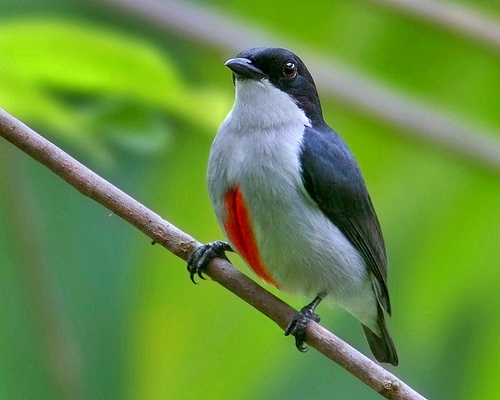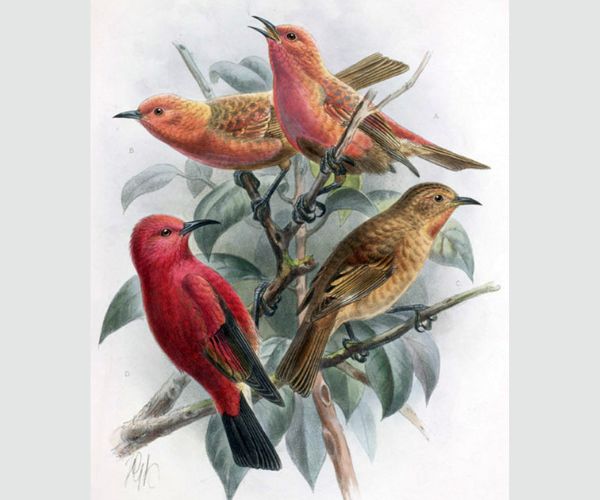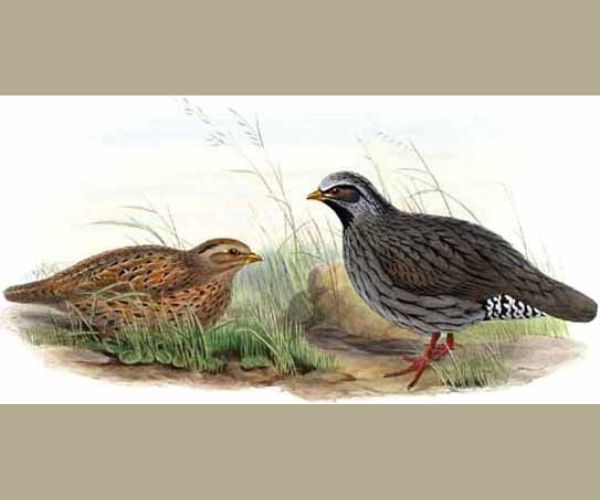When a bird goes extinct it doesn’t only disappear forever from the Earth, along with the irreparable loss to wildlife and nature, it becomes a mystery for future generations who are left with no other source except specimens in museums, historical observations and lived experiences passed down from their ancestors to interpret the magnificent creature that once inhabited their world. And while species going extinct isn’t new, the rate at which this is happening is rather dramatic, especially when it comes to birds. Threats to birds include climate change and human interference like logging, agriculture, hunting and trapping, invasive avian species and other forms of habitat destruction which is driving many species to extinction. The latest State of the World’s Birds report estimates a decline in the population of as many as 48 per cent of the birds worldwide, with almost 1,409 species at the risk of going extinct.
In one of their most recent successes, around late-September this year, they rediscovered the Black-naped Pheasant-Pigeon, lost for 140 years. The bird was described first in 1882 by scientists and hadn’t been documented since. And although it hadn’t been officially declared extinct by the International Union for the Conservation of Nature, the bird remained elusive to humans and was listed along with other avian species on the ‘lost birds’ list. So when Jordan Boersma, co-leader of the Search for Lost Birds expedition team first saw the image of the bird recorded on the camera traps on Fergusson Island, Papua New Guinea, he equated the moment of thrill to that of discovering a ‘mythical creature,’ in a story published by Audubon in which the postdoctoral researcher at Cornell Lab of Ornithology recounted his extraordinary rediscovery. While this certainly comes as fantastic news to nature lovers and the birding community alike, and apart from an immediate effort focused on preserving its habitat to keep it from going extinct, rediscovery of such bird species once considered lost holds more significance than one can imagine.

Over the ages a number of avian species worldwide that have been tantalising scientists, keeping them guessing about their existence, or nonexistence have made for fascinating stories like that of the Storm-petrel. For over 150 years New Zealand’s Storm-petrel, (Fregatta maoriana), one of the smallest seabirds was thought to have gone extinct until a possible sighting made on 25th January, 2003 off Mercury Islands, New Zealand. Its presence was further confirmed months later by two British birders in the Hauraki Gulf. Some birds are rare and have been successful in evading researchers for decades, like the Damar Flycatcher (Ficedula henrici), a forest-dependent bird native to a small island in Indonesia. First documented in 1898, a single specimen of the bird that was collected by Heinrich Kuhn, for Walter Rothschild, a British banker was kept in a museum and only in 2001, a survey of Damar revealed that the flycatcher had a considerable widespread population and was not as vulnerable as considered.

In 1959, the Cebu Flowerpecker, Dicaeum quadricolor, a bright, four-coloured passerine bird was considered extinct. This bird, native to the Philippines’ island of Cebu, was presumed to have gone extinct after all the forest comprising its natural habitat was cleared. Its remarkable rediscovery happened in 1992 and it’s now in the Critically Endangered category of the International Union for Conservation of Nature list. While closer home, the Himalayan Quail last recorded in 1876 and found in Uttarakhand is still waiting, either to be rediscovered or to disappear forever if that doesn’t happen in time.

Losing a species of birds isn’t alone about a species disappearing altogether from amongst us or that our children will never see or interact with a beautiful living creature that walked on our planet. According to reports published in the journal named Current Biology, researchers have warned about the far-reaching implications a species’ extinction has both on other bird species as well as the ecosystem. Bird species play a key role in seed dispersion, pest control, are vital to pollination and clean up waste that helps to preserve the ecosystem and maintain the delicate balance which human and other wildlife depend upon and the extinction of any one of these species can lead to termination of either of these services. Furthermore, as extinctions happen scientists fear that it will lead to a loss of unique physical characteristics or morphological diversity in birds – a result of their evolution as birds adapt to their ecosystems, leaving those surviving more physically similar to one another as species lose trait and phylogenetic diversity.
As the change in biodiversity quickens and every day a new species is either becoming critically endangered or going extinct with a whopping 1 million of total 8 million plant and animal species now at a risk of extinction, according to a UN report – this is turning out to be a race against time.
Images courtesy: Wikimedia Commons
Lesley D. Biswas is a freelance writer and children’s author based in Kolkata. Her interests include nature, bird photography and cricket.








